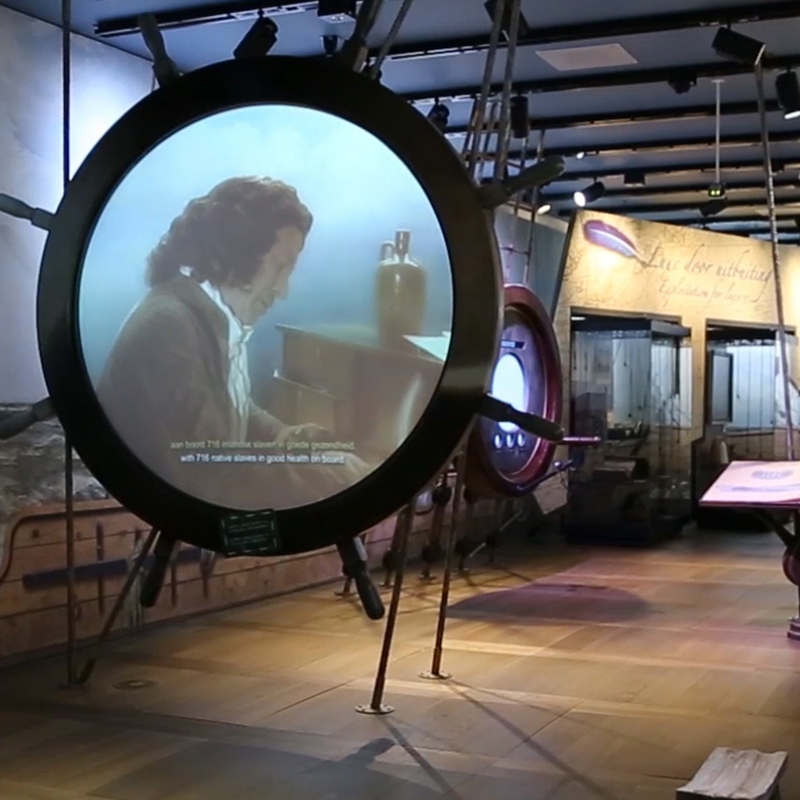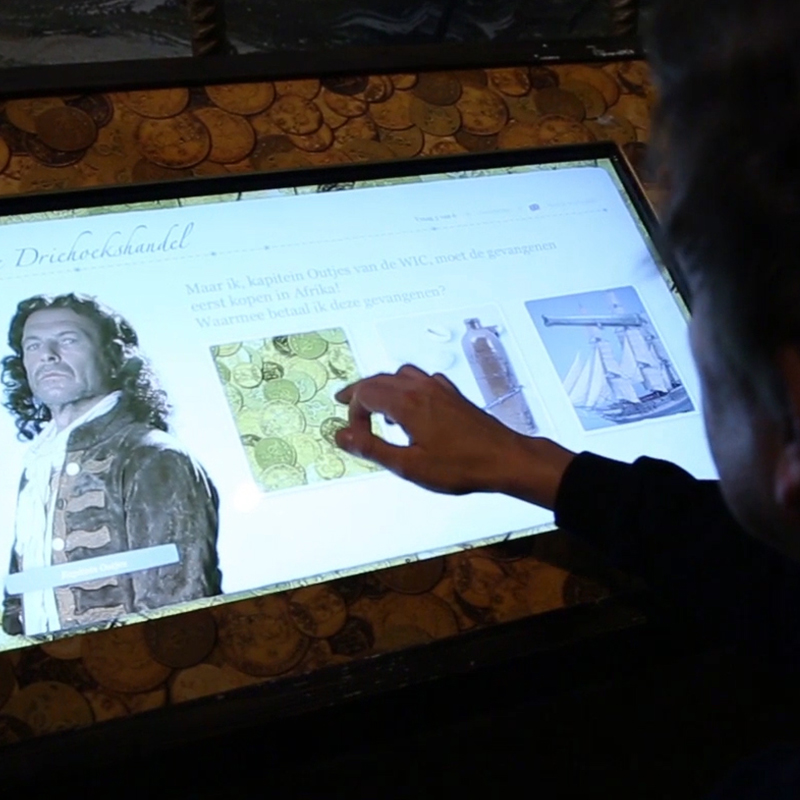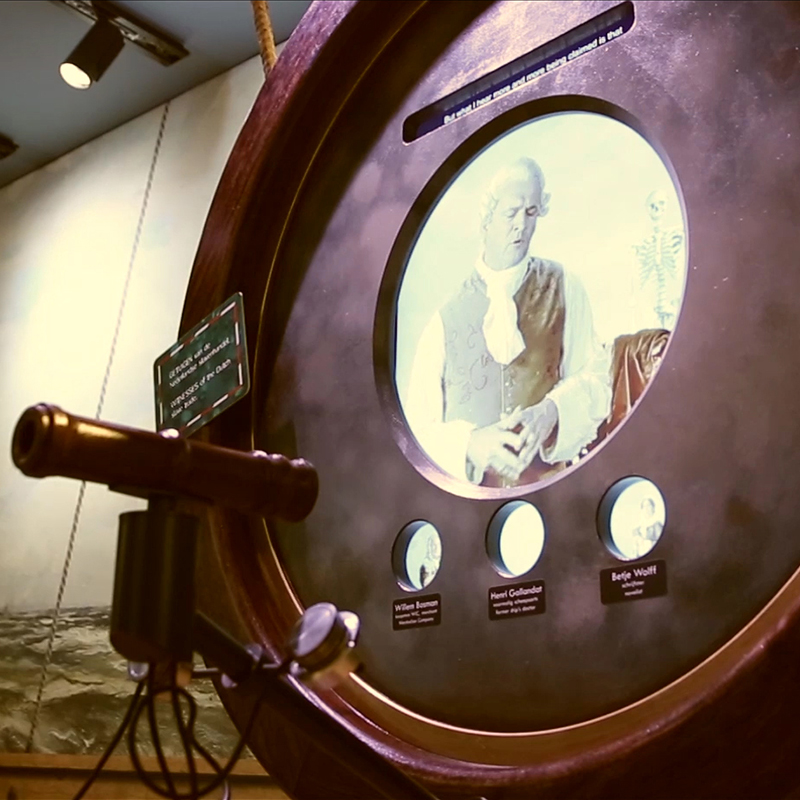In 2013, the abolition of slavery was commemorated on its 150th anniversary. As the horrors of the transatlantic slave trade could never have taken place without shipping, the National Maritime Museum in Amsterdam organised a special exhibition focusing on this frequently underexposed period in Dutch history.
The exhibition, entitled 'The Dark Chapter' gave the visitors a glimpse into the Dutch slave trade via the dramatic story of the slave ship Leusden. For this purpose, MCW developed a wide range of interactive and audio-visual solutions.



Background
On 19 November 1737, the Dutch slave ship Leusden set sail from Africa. On board was a group of 700 African prisoners - men, women and children - who were to be sold into slavery on the Suriname plantations. However, their fate would be even more tragic. On 1 January 1738, the ship was wrecked at the mouth of the Maroni River in Suriname. Fearing that the slaves would overrun him, Captain Outjes ordered that the doors to the slave decks be sealed. The prisoners didn't stand a chance.
The frigate Leusden was built in 1719, just a stone's throw away from where the National Maritime Museum is located today. Dr Leo Balai obtained a PhD specialising in the voyages of the Leusden and the powerful and moving exhibition 'The Dark Chapter' is based on his research.
The assignment
Develop powerful and compelling audio-visual elements and interactive exhibits in order to bring the story of the slave ship Leusden to life.




